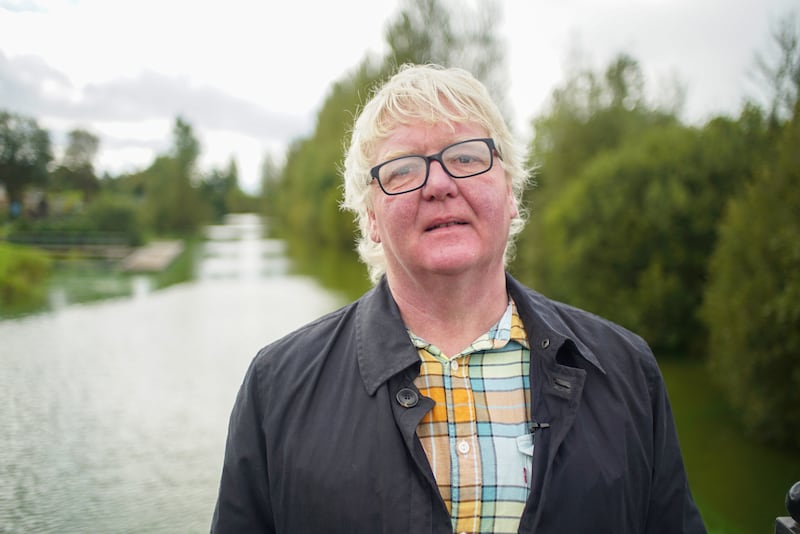Gary McErlain has lived and worked on Lough Neagh all his life. As a seventh-generation commercial fisherman he spends each and every day around the lake. The lough – the largest freshwater lake in Ireland and Britain and the source of 40 per cent of Northern Ireland’s drinking water – is “something that’s ingrained in you”, he said.
“We have a profound respect and love for it,” he said.
“The state it got into last year, we were seeing the signs for a long period of time, shouting about it and getting nowhere, so at least last year brought it to a head.”
For decades excess nutrients – from agricultural fertiliser, poor wastewater treatment and septic tanks – have polluted its water. Climate change and the presence of an invasive species, the zebra mussel, have encouraged the growth of a poisonous blue-green algae which brought Lough Neagh’s plight to worldwide attention.
Shane Horgan’s Six Nations prediction almost comes true, while Off The Ball comments make BBC coverage
Mortgage-free in a cosy cottage before age 40: ‘I don’t have any savings, but I don’t have any debt either’
There is a shock in store for Ireland once Donald Trump’s Maga men look closely
Dr Lydia Foy: ‘I never got an apology actually. It would be nice to get one’
Last week the Northern Ireland Executive gave approval to a 37-point plan for Lough Neagh published by the Minister for the Environment Andrew Muir, a member of the Alliance Party. Muir has described the scale of the change needed to tackle environmental problems at the lake as unprecedented.
Broken down into four areas – education, regulation, enforcement and science and governance – the measures include improved water quality monitoring, a pilot tree-planting programme, consultation on restricting the use of chemical fertilisers and a review of penalties and fines for environmental crimes.
Longer-term recommendations include the delivery of Lough Neagh wastewater schemes to reduce nutrient loading – though subject to funding – and the scoping of a conservation management plan to inform future efforts to restore its ecosystem.
At Lough Neagh this week to discuss the plan with those engaged in its preservation the Minister signalled changed times. He told reporters the 2013 Going for Growth strategy, aimed at accelerating the growth of farming, fishing and the food and drink industry in Northern Ireland, had been a “mistake.”

Among those present was McErlain, chair of the Lough Neagh Partnership. “I’d love to have seen the plan much more rigorous, but it’s a plan, it’s something rather than nothing, and we have to at least give it a go and see where it brings us.” The plan will be “of no use unless it’s implemented and implemented immediately”, he added.
“This is a pretty good start,” said his partnership colleague Michael Meharg, a farmer, ecologist and co-ordinator of the Lough Neagh environmental group farm project. He compared the challenge ahead to “turning a supertanker”.
“I think farmers can be a part of the solution quite quickly. But an action plan doesn’t necessarily equate to action, and we’ve got to make sure the action plan turns into actions, and actions that are pragmatic and possible and achievable.”
“This plan is totally inadequate to deal with the seriousness of the dying of Lough Neagh,” said James Orr from Friends of the Earth. “What is presented as a plan is a recipe for business as usual, it’s not going to reverse the trends, never mind halt them.”
It lacks vision, he says. Individual pledges “which in themselves are really important…don’t address the nature of our food policy and how we produce food” – in particular intensive factory farming.
Yet Orr remains hopeful. “For the first time we’re having a proper, grown-up discussion about food policy, but also the Going for Growth strategy, we’re beginning to look at community ownership, having debates about a rights of nature model … there is a shift in the debate, and that’s exactly where a vision will emerge from.”
In a statement the Minister said that under his leadership it was “most definitely not business as usual”. The Going for Growth strategy was “not party of my lexicon”, he said.
Getting the Lough Neagh Report and Action Plan agreed by the Executive was, he said, “a major moment, but it’s just a first step” and was “just one of many” planned interventions.
These include the establishment of an independent environmental protection agency and further discussions with the Earl of Shaftesbury, who owns the bed and soil of Lough Neagh, about securing community ownership.
His “biggest worry,” the Minister said, was “getting the finances and support needed to move at the lighting fast speed required”, but added that “for those who wish to pass judgment on me, all I ask is to give me time”.
“The challenges faced are gargantuan. There’s no quick fixes, problems built up over decades can’t be fixed in months or a few years, but I am committed to making the changes needed with every fibre of my being,” Muir said.
Fisherman McErlain is sanguine about the future solutions.
“As a fisherman you have to be optimistic, every time you go on Lough Neagh. We’re optimistic the lough can be the jewel it is, and there are enough good people around the lough now to keep the pressure on.”
- Sign up for push alerts and have the best news, analysis and comment delivered directly to your phone
- Join The Irish Times on WhatsApp and stay up to date
- Listen to our Inside Politics podcast for the best political chat and analysis










